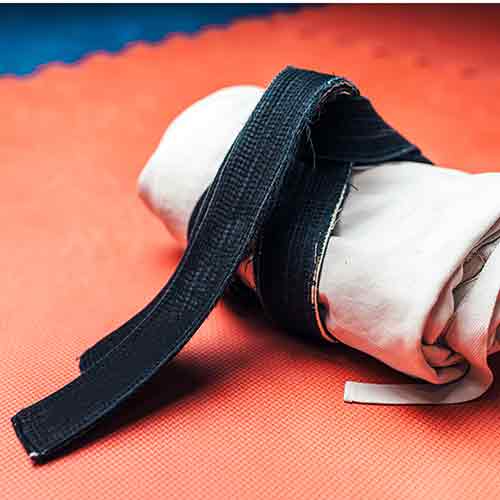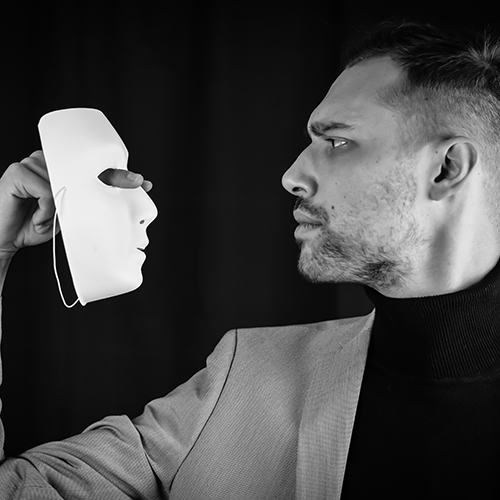Author
Rudolph Victor Nieblas
Share
The passing of loved ones over the past couple of months has driven home life’s fragility. While the gym keeps me moving, it lacks the fire I once knew as a competitive martial artist. Sometimes, a sudden twitch rekindles those old reflexes – echoes of countless repetitions ingrained over decades.
![AdobeStock_542334336-[Converted]](https://neverquitind.com/wp-content/uploads/2024/04/AdobeStock_542334336-Converted-1.png)
What if I could tap into those passionate years and rediscover that relentless training spirit? The dojo wasn’t just about fighting; it instilled discipline, focus, a drive that went beyond competition. So, a few weeks ago, I started weaving old movements into my workouts. At 70, I find myself rediscovering those techniques. It’s not about chasing tournaments but a different kind of strength. It’s amazing how quickly the body remembers, fueled by that lifetime of practice. This isn’t about clinging to my youth but evolving the skills I’ve honed into tools for mobility and well-being.This is my rebellion against the ticking clock. A testament that passion doesn’t have an expiration date. I am rekindling my love with the martial arts, and I am pleasantly surprised by how much I can still do. Was your old passion a ball, a stick, running? No matter your age, maybe you still can do some of it? Never quit taking care of yourself.
Of course, don’t be knucklehead and consult your doctor before starting a new movement routine, especially if you have underlying health conditions. Honor your journey: This is about re-establishing a joyful, empowering relationship with your body as it is now. Celebrate small wins and embrace ongoing exploration!
1. Mindful Rediscovery:
Reflect: Begin by identifying activities that sparked passion in your younger years. Were you into sports, dance, or another form of exercise?
Inventory your body: Observe your natural movements, paying attention to your range of motion, flexibility, and any areas of tension.
2. Adapt with Intention:
Purpose over Perfection: Shift your focus from performance to how an activity makes you feel in the present.
Modify: Break down the movements and adjust them to fit your current abilities. Seek guidance from physical therapists or trainers if needed.
3. The Joy of Movement:
Reignite Playfulness: Don’t take it too seriously. Approach your movement practice with curiosity and the willingness to experiment.
Find Your Flow: Choose activities that put you in a state of focused enjoyment, allowing you to be completely present.
4. Embrace Consistency:
Sustainable Routine: Find a consistent rhythm that fits your lifestyle. Aim for short, frequent movement sessions rather than occasional intense workouts.
Listen to your body: Honor your limits and days when rest is needed. This makes consistency sustainable.
5. Fuel Your Body:
Whole food focus: Prioritize nourishing foods that enhance your energy and well-being.
Hydration is key: Ensure adequate water intake to support your body’s processes and physical recovery.
6. Expand Your Repertoire:
Cross-training benefits: Explore complementary practices like yoga, tai chi, or dance to diversify your movement patterns.
Outdoor exploration: Spending time in nature has a rejuvenating impact on both body and mind.
7. The Power of Community:
Seek support: Find a movement class, walking group, or workout buddy for motivation and shared joy.
Mentor and learn: Connecting with younger or differently-abled individuals can offer new perspectives on movement.
8. Beyond Physicality:
Breathwork: Include mindful breathing techniques to enhance your focus and overall sense of calm.
Mental agility: Pair your physical routine with puzzles, games, or learning a new skill to keep your mind sharp.
Here are specific Mobility Movements Tailored to Different Sports for several disciplines that focus on building a strong foundation of mobility for an enhanced quality of life and longevity:
- Boxers and Martial Artists:
- Thoracic rotations: Essential for punching power and fluidity. (Seated twists, bird dog variations)
- Hip flexor mobility: Improves kicking range and balance. (Deep lunges with variations, kneeling hip flexor stretches)
- Neck and shoulder rolls: Reduces tension, and aids in defensive movements.
- Runners:
- Dynamic leg swings: Warms up hip flexors, quads, and hamstrings for greater stride length.
- Ankle mobility drills: Prevents injury, promotes a strong push-off. (Calf raises, ankle circles)
- Walking lunges with torso twist: Opens the entire kinetic chain for a powerful stride.
- Gymnasts and Dancers
- Deep squat variations: Enhances hip and ankle flexibility for landings and leaps. (Cossack squat, supported squat hold)
- Scapular mobility exercises: Crucial for shoulder health and graceful arm movements. (Wall slides, band pull-aparts)
- Spinal waves and cat-cow pose: Maintains flexibility throughout the spine, allowing for fluid expressive motions.
- Basketball and Football Players
- Lateral lunges and shuffle variations: Improves agility and change-of-direction speed.
- World’s Greatest Stretch: Full-body mobility, targeting areas prone to tightness in explosive sports.
- Rotational core work: Strengthens the core for quick turns and power transfer. (Medicine ball tosses, wood-chopper variations)
- Swimmers
- Shoulder circles and arm swings: Prevents injuries and improves the range of motion for powerful strokes.
- Thoracic extensions: Opens the chest for improved breathing and efficient posture in the water.
- Ankle stretches with band resistance: Helps maintain a strong, pointed foot position for a better kick.
Important Notes:
- Warmups: Incorporate these mobility exercises into your warmup routine before your main workout.
- Individual needs: Tailor exercises to address specific areas of tightness or limitations in your body.
- Progression: Gradually increase range of motion and difficulty over time.
- Professional guidance: If recovering from an injury or have specific concerns, consult a physical therapist or qualified trainer.
#fitnessover70 #healthyaging #fitnessmotivation






